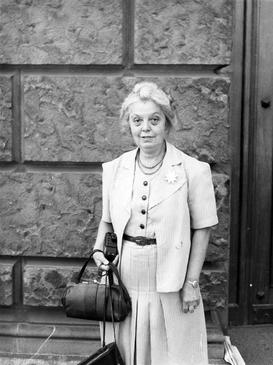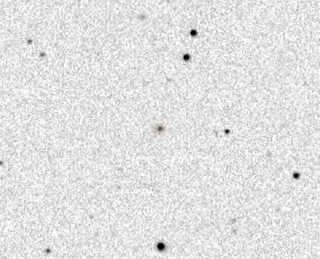Related Research Articles

The International Astronomical Union is an international non-governmental organization (INGO) with the objective of advancing astronomy in all aspects, including promoting astronomical research, outreach, education, and development through global cooperation. It was founded on 28 July 1919 in Brussels, Belgium and is based in Paris, France.
In ancient times, only the Sun and Moon, a few stars, and the most easily visible planets had names. Over the last few hundred years, the number of identified astronomical objects has risen from hundreds to over a billion, and more are discovered every year. Astronomers need to be able to assign systematic designations to unambiguously identify all of these objects, and at the same time give names to the most interesting objects, and where relevant, features of those objects.
The Minor Planet Center (MPC) is the official body for observing and reporting on minor planets under the auspices of the International Astronomical Union (IAU). Founded in 1947, it operates at the Smithsonian Astrophysical Observatory.
Brian Geoffrey Marsden was a British astronomer and the longtime director of the Minor Planet Center (MPC) at the Center for Astrophysics | Harvard & Smithsonian.
Richard Martin West is a Danish astronomer and discoverer of astronomical objects with a long career at the European Southern Observatory (ESO) and at the International Astronomical Union (IAU).

Julie Marie Vinter Hansen was a Danish astronomer. She is the first woman to be obtain a scientific degree in astronomy in Denmark.
Pierre Antonini is a retired French mathematics professor and amateur astronomer who has discovered several minor planets and two supernovae at his private Observatoire de Bédoin located at Bédoin, southeastern France. For many of his discoveries he used a 16-cm telescope or a 30-cm telescope.
The International Astronomical Union Circulars (IAUCs) are notices that give information about astronomical phenomena. IAUCs are issued by the International Astronomical Union's Central Bureau for Astronomical Telegrams (CBAT) at irregular intervals for the discovery and follow-up information regarding such objects as planetary satellites, novae, supernovae, and comets.
102P/Shoemaker, also known as Shoemaker 1, is a periodic comet in the Solar System. It was first seen in 1984 and then again in 1991. Images taken of it in 1999 were not recognized until 2006 when it was once again observed. It was unexpectedly dim in each of these returns.
Masakatsu Aoki is a Japanese amateur astronomer who operates from his private Aoki Astronomical Observatory at Toyama, Toyama Prefecture, Japan.
2044 Wirt, provisional designation 1950 VE, is a binary Phocaea asteroid and Mars-crosser, approximately 6.7 kilometers in diameter. The minor-planet moon has an estimated diameter of 1.89 kilometer.
Haumea was the first of the IAU-recognized dwarf planets to be discovered since Pluto in 1930. Its naming as a dwarf planet was delayed by several years due to controversy over who should receive credit for its discovery. A California Institute of Technology (Caltech) team headed by Michael E. Brown first noticed the object, but a Spanish team headed by José Luis Ortiz Moreno were the first to announce it, and so normally would receive credit. Brown accused the Spanish team of fraud, using Caltech observations without credit to make their discovery, while the Ortiz team accused the American team of political interference with the International Astronomical Union (IAU). The IAU officially recognized the Californian team's proposed name Haumea over the name proposed by the Spanish team, Ataecina, in September 2008.

A minor planet is "lost" when today's observers cannot find it, because its location is too uncertain to target observations. This happens if the orbital elements of a minor planet are not known accurately enough, typically because the observation arc for the object is too short, or too few observations were made before the object became unobservable.

Puckett Observatory is a private astronomical observatory located in the state of Georgia. It is owned and operated by Tim Puckett. Its primary observation goals are the study of comets and the discovery of supernovae. To facilitate the latter goal it sponsors the Puckett Observatory World Supernova Search whose astronomers have discovered 369 supernovae.

Østervold Observatory is a former astronomical observatory in Copenhagen, Denmark owned and operated by the University of Copenhagen. It opened in 1861 as a replacement for the university's old observatory at Rundetårn.

440P/Kobayashi is a periodic comet in the Solar System, discovered by the Japanese amateur astronomer Takao Kobayashi on January 30, 1997. It was the first comet to be discovered by an amateur astronomer with the use of CCD.
CBET may refer to:
Leonid Vladimirovich Elenin is a Russian amateur astronomer working with the ISON-NM observatory (H15) via the International Scientific Optical Network (ISON), which is the first Russian remote observatory in the West.

Comet 252P/LINEAR is a periodic comet and near-Earth object discovered by the LINEAR survey on April 7, 2000. The comet is a Jupiter family comet, meaning that it passes quite close to the orbit of Jupiter.
Tenagra Observatory and Tenagra Observatory II are astronomical observatories in Cottage Grove, Oregon and Arizona. The observatories house heavily automated robotic telescopes.
References
- ↑ History of the Central Bureau for Astronomical Telegrams, IAU Central Bureau for Astronomical Telegrams, retrieved 27 August 2011
- ↑ "Science is not national, but scientists are: International 20th century and Danish astronomers" (PDF). ICESHS. Retrieved 2009-08-09.